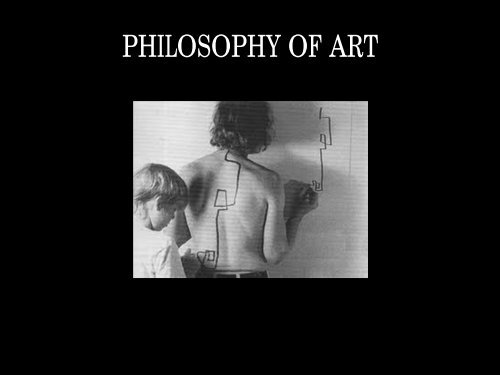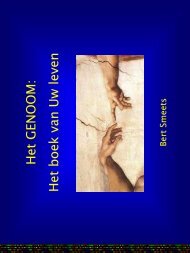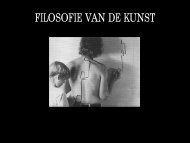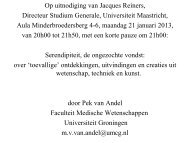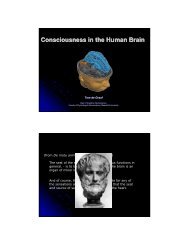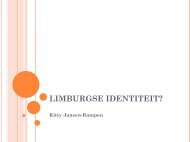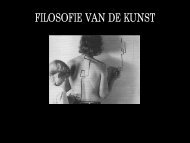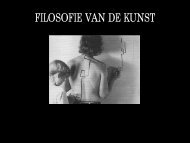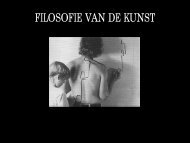PHILOSOPHY OF ART
PHILOSOPHY OF ART
PHILOSOPHY OF ART
You also want an ePaper? Increase the reach of your titles
YUMPU automatically turns print PDFs into web optimized ePapers that Google loves.
<strong>PHILOSOPHY</strong> <strong>OF</strong> <strong>ART</strong>
LECTURES<br />
I. The Beauty and the Sublime.<br />
II. Ethics and Aesthetics.<br />
III. Nature and culture.<br />
IV. Aesthetic truth.<br />
V. Postmodernism.
I. THE BEAUTY AND THE SUBLIME
1. AESTHETICS<br />
What is art?<br />
2. THINK AND FEEL<br />
How to approach art?<br />
3. NOT ONLY BEAUTIFUL<br />
Is art only about the beauty?
I. AESTHETICS
TWO APPROACHES<br />
‣ Professional philosophers approach philosophy in<br />
two ways:<br />
1. An historical approach > the study of the<br />
history of ideas that philosophers<br />
developed.<br />
2. A systematic approach > the study of<br />
specific problems.<br />
‣ Aesthetics is like logic, ethics and metaphysics a<br />
subdiscipline of philosophy that can be<br />
approached in both ways.<br />
‣ Alexander Gottlieb Baumgarten (1714-1762) > the<br />
name giver of the subdiscipline aesthetics.
A CONTESTED DEMARCATION<br />
‣ In everyday life people often raise the question: what is art?<br />
‣ There are regularly public controversies about the demarcation<br />
between art and non-art.<br />
‣ The question ‘what is art?’ is often answered ex negativo > by<br />
indicating what art is not.<br />
‣ Several examples show that:<br />
- Music: the first performanc of the Altenberg Lieder<br />
composed by Alban Berg in 1913 > noise instead of music.<br />
- Literature: the publication of Lolita (1955) written by<br />
Vladimir<br />
Nabokov > porn instead of literature.<br />
- Visual arts: the exhibition of so-called ‘Degenerate Art’<br />
(Entartete Kunst (1937)) in Munich > false instead of true art.
BEYOND ESSENTIALISM<br />
‣ Many philosophers tried to discover the essence<br />
of art.<br />
‣ That was motivated by the question: ‘What is<br />
art?’<br />
‣ The presupposition > by carefully studying what<br />
art is its essence would be brought to light.<br />
‣ Especially modern art shows that this quest is<br />
vain > it is an illusion to think that the properties<br />
of an object make it a work of art.<br />
‣ That is what the Readymades of Marcel<br />
Duchamp show.
MARCEL DUCHAMP<br />
Short biography:<br />
‣ 1887: born January 4 in Balagnysur-Thérain.<br />
‣ 1912: initial study in Paris.<br />
‣ 1914-1919: was a soldier during<br />
World War I.<br />
‣ 1924-1928: close contact with the<br />
Surrealists.<br />
‣ 1941: emigration to the United<br />
States.<br />
‣ 1945: return to Paris.<br />
‣ 1968: died on October 2 in Neuilly.
<strong>ART</strong> ABOUT <strong>ART</strong><br />
‣ The revolutionary part of Duchamp’s<br />
art is that he brought up art for<br />
discussion.<br />
‣ In 1913 he did so by exhibiting a<br />
bicylce wheel (Roue de Bicyclette) that<br />
he had found (objet trouvé).<br />
‣ When he exhibited in 1917 a urinal<br />
titled Fountain and signed with<br />
R[ichard] Mutt it caused a shock.<br />
‣ Question: does the context determine<br />
whether something is art?<br />
‣ Readymades establish a kind of art<br />
about art.
WHEN<br />
‣Inspired by artists like Duchamp Nelson Goodman<br />
(1906-1998) in Ways of Worldmaking (1978)<br />
suggests to replace the question ‘what is art?’ by<br />
the question ‘when is art?’.<br />
‣It seems to be useful to examine when and under<br />
which circumstances an object receives the status<br />
of art.<br />
‣The when-question draws attention to the object<br />
and its context, but neglects the subject that<br />
perceives the object.<br />
‣New question: what is an aesthetic experience?
AESTHETIC EXPERIENCE<br />
‣A central question in contemporary aesthetics:<br />
what is the difference between an aesthetic<br />
experience and a non-aesthetic experience?<br />
‣Starting point: the experiences that a person<br />
gains from reading a novel, listening to a piece of<br />
music that moved him or her, or a painting that<br />
he or she likes are different from daily<br />
experiences.<br />
‣Before one addresses the issue of aesthetic<br />
experience one should deal with two<br />
philosophers that had an essentialist view of art.
PLATO (427-347 v. Chr.)<br />
Major works:<br />
‣The Parmenides.<br />
‣The Protagoras.<br />
‣The Timaeus.<br />
‣The Republic.<br />
‣The Laws.<br />
‣The Symposium.<br />
‣The Apology.<br />
‣The Phaedo.<br />
‣The Crito.
THE TRUTH AND THE BEAUTY<br />
‣ There are few philosophers who have sent so<br />
many contradictory messages about art as Plato.<br />
‣ On het one hand in The Symposium: “If there is<br />
anything that makes life worth living, then it is<br />
the contemplation about the beauty.”<br />
‣ On the other hand Plato argues in The Republic<br />
that art is incompatible with the process of<br />
establishing the truth.<br />
‣ Truth for him has nothing to do with<br />
correspondence, but with the ‘being’ of a thing.<br />
‣ A thing is more truth when it comes closer to an<br />
idea.
THE ESSENCE<br />
‣ The world of ideas is the true state of being > ideas are in time<br />
and space invariably and therefore the essence of everything.<br />
‣ The mortal and therefore the changing world is not really relevant<br />
> for Plato not the actual tulips, but the idea of the tulip is<br />
relevant.<br />
‣ Ideas are the archetypes of all that there is; they are the essence.<br />
‣ Plato distinguishes two types of artists:<br />
1. Those who create something > a blacksmith, cartwright<br />
or an architect.<br />
2. Those who express or imitate (mimesis) something > a<br />
painter, sculptor or poet.<br />
‣ The former are closer to the truth, because they have an idea in<br />
their mind that they try to realize.<br />
‣ The other artists don’t depict the being, but its appearance > they<br />
provide nothing more than a shadow of a dream.
SENSUAL PLEASURE IS DANGEROUS<br />
‣ The beauty arouses the desire to know ideas.<br />
‣ The idea of the beauty coincides with the idea<br />
of the truth.<br />
‣ Art can wake the desire to the highest value ><br />
the truth.<br />
‣ However, sometimes this desire is already<br />
satisfied when the appearance of the beauty is<br />
observed.<br />
‣ Because this sensual pleasure frustrates the<br />
process of establishing the truth, Plato is<br />
ultimately negative about art.
ARISTOTELES (384-324 v. Chr.)<br />
Major works:<br />
‣Categories.<br />
‣On Interpretation.<br />
‣Nicomachean Ethics.<br />
‣Politica.<br />
‣Poetics.<br />
‣Rhetoric.<br />
‣Physics.<br />
‣Metaphysics.<br />
‣On the Soul.
MIMESIS<br />
‣ Like Plato, Aristotle sees art as the expression or<br />
imitation (mimesis) of something.<br />
‣ However, Aristotle gives it a positive connotation.<br />
‣ That is because he rejects Plato’s notion of the<br />
truth.<br />
‣ According to Aristotle ideas don’t dwell in a<br />
separate world, but they are part of reality > they<br />
are housed in things and give shape to them.<br />
‣ Aristotle argues that it is the task of the artist not<br />
to copy reality one-to-one > they have “to say what<br />
really happened, but what could happen.”
THE GENERAL AND THE P<strong>ART</strong>ICULAR<br />
‣ Although tragedies depict historical figures, they<br />
always show how people in certain situations<br />
could act.<br />
‣ The purpose is not to express the particular but<br />
the general > the typical.<br />
‣ Therefore the poet is closer to the truth than the<br />
historian.<br />
‣ Artists should have the freedom not to copy<br />
reality blindly > it is all about the effects that a<br />
tragedy has on the spectators.<br />
‣ Effect is sorted when what is represented is<br />
credible.
PERFORMATIVITY<br />
‣ Art is according to Aristotle not only about the truth,<br />
but also about the effect.<br />
‣ Aristotle emphasizes, in other words, the<br />
performativity of works of art.<br />
‣ The tragedy evokes both pity and fear and thus ensures<br />
a pleasurable purification (katharsis) of these emotions.<br />
‣ For Plato art is odious because it evokes these kind of<br />
emotions.<br />
‣ Aristotle seeks a balance between reason and emotions<br />
> in certain circumstances it wouldn’t be reasonable if<br />
someone is not very angry.<br />
‣ It is for instance appropriate to be in the case of<br />
injustice angry.
II. THINK AND FEEL
IMMANUEL KANT (1724-1804)<br />
Major works:<br />
‣ Kritik der reinen Vernunft (1781).<br />
‣ Prolegomena (1783).<br />
‣ Grundlegung zur Metaphysik der<br />
Sitten (1785).<br />
‣ Kritik der praktischen Vernunft<br />
(1788).<br />
‣ Kritik der Urteilskraft (1783).<br />
‣ Zum ewigen Frieden (1795).<br />
‣ Die Metaphysik der Sitten (1797).
RATIONALISM AND EMPIRICISM<br />
‣ Due to Aristotle art was seen as rule-governed behaviour.<br />
‣ In the 17th century rationalism concluded that the beauty<br />
can ge generated if one apply certain rules.<br />
‣ In Engeland they struggled against an overly rational<br />
approach to art > there they presented an aesthetic view<br />
that does justice to what people feel (Shaftesbury,<br />
Hutcheson, Burke).<br />
‣ Empiricism > beautiful is what is perceived as such.<br />
‣ David Hume: the beauty is finally experiencing the pleasure<br />
one has when one observes an object.<br />
‣ Kant tries to bridge the gap between the two positions.
A DISINTERESTED WELL-BEING<br />
‣ The beauty is not linked to the object nor to the subject<br />
that observes.<br />
‣ Although pleasure is important when it comes to the<br />
aesthetic experience, it is not the same kind of pleasure<br />
that is evoked by the good or something that is just<br />
pleasant.<br />
‣ Something is good with regard to a predetermined goal and<br />
something is just pleasant, because it stimulates the senses<br />
in an unmediated positive way.<br />
‣ The pleasure of the beauty is a disinterested pleasure (ein<br />
interesseslose Wohlgefallen).<br />
‣ Because the aesthetic experience is free of interests, it<br />
transcends particular interests.
THE GENIUS<br />
‣ The beauty often arouses the desire of people to<br />
convince others about a specific aesthetic judgment.<br />
‣ Taste is relevant for the assessment of art.<br />
‣ For the creation of good art one needs the genius.<br />
‣ The genius > a person that creates and prescribes a new<br />
rule in art.<br />
‣ Unlike science art is not simply about the application of<br />
rules (methods).<br />
‣ The genius raises new standards.<br />
‣ Pablo Picasso is a good example, because he introduced<br />
new rules for painting.
Short biography:<br />
‣ 1881: born October in Malaga.<br />
PABLO PICASSO<br />
‣ 1891: first drawing lessons from his father.<br />
‣ 1895: starts to study at the art academy in<br />
Barcelona.<br />
‣ 1900: for the first time in Paris.<br />
‣ 1904-1908: stay in Paris where he meets<br />
among others Apollinaire, Matisse, Braque,<br />
Derain en Kahnweiler.<br />
‣ 1910: stay with Derain in Cadaqués.<br />
‣ 1911-1913: stay with Braque and Gris in Cérat.<br />
‣ 1925: participates in an exhibition of the<br />
surrealists.<br />
‣ 1973: died April 8 in Mougins.
CONSTRUCTIVISM<br />
‣ Picasso created several times a new visual<br />
language, i.e. rules for making images.<br />
‣ For instance, together with Juan Gris and<br />
George Braque he introduced Cubism.<br />
‣ The visual language of Cubism is indirectly<br />
influenced by Kant.<br />
‣ Not what is observed, but the<br />
construction of the person who perceives<br />
something from a specific angle is the<br />
starting point.<br />
‣ Cubist artists depict an object from<br />
different perspectives, analyses it and<br />
reassembles it by the construction of<br />
geometric forms > so one can do justice to<br />
the perception of a three-dimensional<br />
world on a two-dimensional canvas.<br />
• I
III. NOT ONLY BEAUTIFUL
BEYOND BEAUTY<br />
‣In the 18th and 19th century philosophers<br />
developed concepts that go beyond the beauty.<br />
‣They focus most often on two concepts: the ugly<br />
and the sublime.<br />
‣Karl Rosenranz (1805-1879) developed an<br />
aesthetics of the ugly > Ästhetik des Häßlichen<br />
(1853).<br />
‣Art that just wants to be beautiful, lapses easily<br />
into ornaments en limits its own possibilities of<br />
expression.
WHAT CANNOT BE GRASPED<br />
‣Edmund Burke (1729-1797) inspired Kant with his<br />
distinction of the beauty and the sublime.<br />
‣The sublime is an aesthetic quality that refers to the<br />
inconceivable of what is big.<br />
‣Whereas the beauty is about well-proportioned<br />
forms, the sublime refers to terrifying and irregular<br />
forms.<br />
‣The beauty > harmony between imagination and<br />
reason.<br />
‣The sublime > disharmony between imagination<br />
and reason.<br />
‣It is especially Barnett Newman that gives<br />
expression to that.
BARNETT NEWMAN<br />
Short biography:<br />
‣ 1905: born January 29 in New York.<br />
‣ 1922-1926: studies at Cornell University<br />
(Ithaca) and the Art Student’s League<br />
(New York).<br />
‣ 1927-1937: works at home with his<br />
parents.<br />
‣ 1948: establishes with William Baziotes,<br />
Robert Motherwell and Mark Rothko the<br />
art school ‘Subjects of the Artists’.<br />
‣ 1959: leads the ‘Artists Workshop’ of the<br />
de University of Saskatchewan.<br />
‣ 1962-1964: professor at the University of<br />
Pennsylvania.<br />
‣ 1970: died on June 4 in New York.
CONTRA FORMALIS<br />
‣ Newman opposes all kinds of formalism in<br />
art.<br />
‣ So he says the following about his famous<br />
Who’s afraid of Red, Yellow and Blue<br />
(1967/1968): “Just as I had confronted other<br />
dogmatic positions of the purists, neoplasticists<br />
and other formalists, I was now in<br />
confrontation with their dogma, which had<br />
reduced red, yellow and blue into an ideadidact,<br />
or at best had made them<br />
pittoresque. Why give in to these purists and<br />
formalists who have put a mortgage on red,<br />
yellow and blue, transforming these colors<br />
into an idea that destroys them as colors? I<br />
had therefore, the double incentive of using<br />
these colors to express what I wanted to do<br />
of making these colors expressive rather<br />
than didactic, and of freeing them form the<br />
mortgage. Why should anybody be afraid of<br />
red, yellow and blue? www.youtube.com/watch?v=2QnrXJghoU
JEAN-FRANÇOIS LYOTARD (1924-1998)<br />
MAJOR WORKS<br />
‣ La Phénomenologie (1954).<br />
‣ Discours, figure (1971).<br />
‣ Economie libidinale (1974).<br />
‣ Les transformations Duchamp (1977).<br />
‣ La condition postmoderne. Rapport sur<br />
le savoir (1979).<br />
‣ Le différend (1983).<br />
‣ Le postmoderne expliqué aux enfants<br />
(1986).<br />
‣ L 'inhumain. Causeries sur le temps<br />
(1988).<br />
‣ Leçons sur l'analytique du sublime.<br />
Kant, Critique de la faculté de juger<br />
(1991).
THE EVENT<br />
‣ The ‘now’ is sandwiched between what has<br />
happened and what is yet to come.<br />
‣ Lyotard wants to do justice to the event that is<br />
in between the not yet and the not-more.<br />
‣ His question: how can something be present?<br />
‣ This is a question of being and time and evokes<br />
another question: why is there something at<br />
all?<br />
‣ This is simply incomprehensible, something<br />
that one cannot grasp.
THE POWER <strong>OF</strong> THE INTANGIBLE<br />
‣ Art can let one feel what is intangible, what one<br />
cannot grasp.<br />
‣ Lyotard argues that that is the task of art.<br />
‣ The sublime, according to him, is the evocation of<br />
the present time and what cannot be grasped with<br />
language.<br />
‣ Just when one tries to express it in words, it<br />
vanishes.<br />
‣ Lyotard refers to an essay of Barnet Newman: The<br />
Sublime is Now (1948).<br />
‣ He argues: “That here and now there is an image,<br />
than rather nothing, that is the sublime”.
To see:<br />
RECOMMENDATIONS<br />
‣ Marcel Duchamp ><br />
http://www.youtube.com/watch?v=7Cuqni9rqHw<br />
‣ Pablo Picasso ><br />
http://www.youtube.com/watch?v=Pjlq85R_mcQ&feature<br />
=endscreen<br />
‣ Barnett Newman ><br />
http://www.youtube.com/watch?v=2Qn-rXJghoU<br />
To read:<br />
‣ Plato > The Symposium.<br />
‣ Immanuel Kant > Critique of Judgment (1783).<br />
‣ Nelson Goodman > Ways of Worldmaking (1978).


